Figuring out who we are.

Knowing more about ourselves is important to being able to do our best work. If we want to be successful it makes sense to try to start with the areas that come easiest to us. With that strong foundation we can then branch out and try more difficult tasks. But lets start with what is familiar.
For our small groups of students to work well together they also need to have some self knowledge. It would be nice if they also knew the strengths of others in their group. This is what we tried to do.
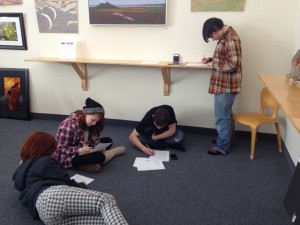
Learning Styles Inventory/ Multiple Intelligences Survey
Each student completed a questionnaire, this site
asking about preferences for different types of activities and situations. This gave each student a numeric score for each questions. Then they completed a second sheet,
which asked them to combine their numeric scores for several different questions. This gave them a composite score for each of 8 Learning Styles.
Then each team transferred their individual scores to a team score sheet. This is where they can see areas of common style and areas where they differ. They also come up with a “team score” that identifies their collective preferred Learning Style.
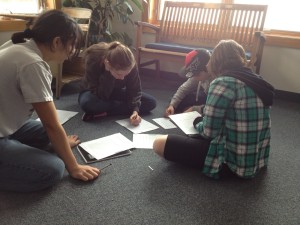
As a visual tool we took this activity another step. We assigned a color for each team and gave them a pad of stickie-notes. We had each student map their top two learning styles on a “Community Map”. In addition, each team mapped their collectively identified preferred learning style on the Community Map, in the same team color.
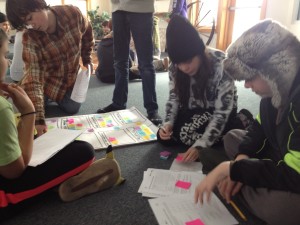
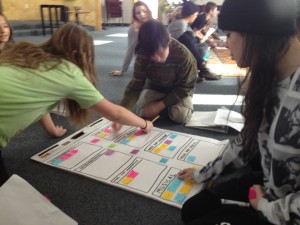
Two of the learning styles boxes on the poster were filled with sticky-notes, and there were two learning style boxes with hardly any. The remaining 4 boxes were all about even.
We were able to go through some of the popular learning styles that showed up often in our results and brainstorm for a few minutes about the types of projects and activities that would be good matches for each of them. We read out loud the characteristics of each one and asked for suggestions for good activity or project matches. This was just to get us thinking in this direction, and it seemed to get us primed appropriately.
Our students are particularly Musical. Every team included a musical student, and several teams. Our students are also Logical . This was another popular area.

The exercise was a great beginning activity. It allowed students to begin to work together in their individual groups. I saw lots of students helping each other out and starting to work together on the common goal. It allowed students time and focus to be self-reflective about how they learn and work, and also an opportunity to communicate about it. The team aspect of the activity also helped students understand that we have similarities and differences. We don’t need to be alike, and that there is strength in difference and diversity. The concept of working together in spite of differences is an area we will be exploring.
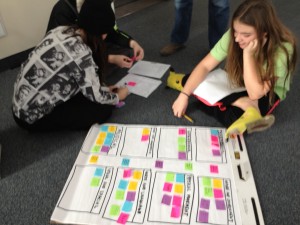
The map will be posted in a common and conspicuous place. It will be interesting to observe how the map works as a tool throughout this process. We will be watching it as we progress, and measuring it’s information against what we will see happening with students.